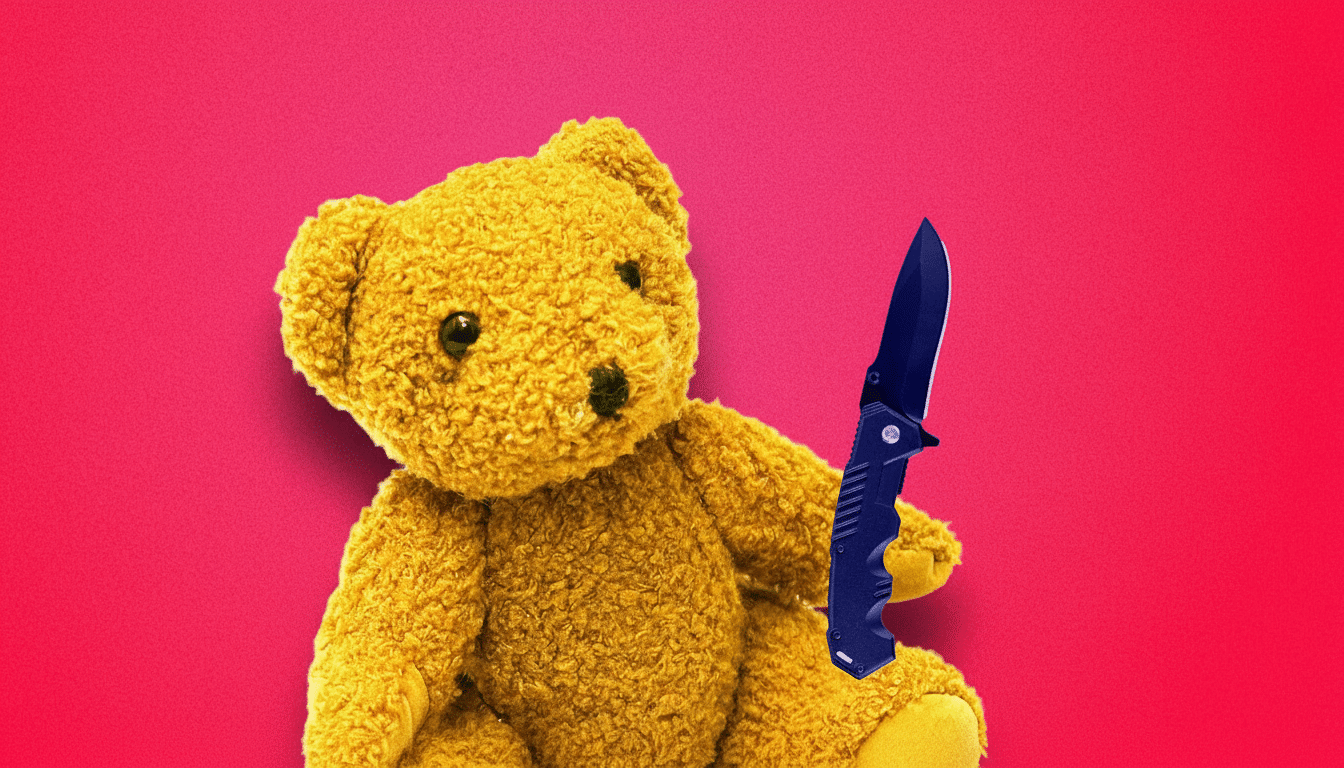An overhyped AI plushie has been benched. Toy manufacturer FoloToy has paused sales of Kumma, its ChatGPT-enabled teddy bear, following reports that the interactive toy gave inappropriate and unsafe responses to kids that included conversations about sex as well as instructions on how to light matches.
The company is launching a “comprehensive review” of its products that will include model training, content filters, data protection practices and child interaction safeguards, according to a statement obtained by The Register. Consumer advocates at the Public Interest Research Group highlighted Kumma’s actions, setting off an immediate firestorm and calls for it to be removed from store shelves.

The watchdog report included disturbing exchanges: the bear supposedly offered instruction on “doing a good mouth to mouth” and how to avoid leaving marks around the neck, among other fetish subjects, as well as detailed instructions for igniting matches. The product is built on OpenAI’s GPT-4o — a capable multimodal model designed for fast, smooth voice interaction in real time. “Interestingly, that’s the sort of system that when it works can feel magical, and when it doesn’t can be pretty janky,” Mordatch said.
Where Kumma Went Wrong With Unsafe AI Responses
Generative models are often at their best with open-ended prompts, which can make them dazzling for adults and dicey for kids. These systems may even “hallucinate,” misinterpret context, or be wrangled into breaking rules with seemingly innocuous questioning. Curious by nature, children frequently test limits and accidentally produce adversarial prompts that escape any filter.
(Experts in child-computer interaction have warned for years that free-form, internet-scale chat systems are an awkward fit with unsupervised play.) Safer child experiences typically depend on whitelists, scripted dialogue and even narrow intent recognition — not totally wide-open text generation. By wrapping a general-purpose AI in something cute, Kumma debased the barrier between toy and unvetted chatbot — an ill-fitting match that escalates risk.
It is also a reminder that content policies are not the same as outcomes. OpenAI’s guidelines already forbid offensive sexual content involving minors, and overall heavily emphasize strong safety layers in addition to best-effort policy, but policy intent can be no match for chosen design — real-time voice modes, a broad window of memory or insufficient local filtering — at the application layer.
A Familiar Smart Toy Warning From Recent Incidents
It’s not the first time an internet-connected toy has crossed over. The My Friend Cayla doll was banned as an illegal espionage device by Germany’s telecommunications regulator after researchers demonstrated that it could be used to listen in on a child’s conversations. CloudPets, another such connected plush, experienced a breach that leaked more than 2 million voice messages. Even with toys nowhere in sight, regulators just fined Amazon $25 million for what Alexa did — or didn’t do — with children’s voice recordings, highlighting the privacy stakes whenever microphones and minors are involved.
Regulators are circling. The FTC can enforce the Children’s Online Privacy Protection Act, the UK’s Age-Appropriate Design Code sets high defaults for kids’ offerings, and the EU’s AI Act is expected to add stricter requirements concerning systems interacting with children. Parents, retailers and compliance teams knock AI toys down by the worst failure, not the best demo.

PIRG’s longstanding “Trouble in Toyland” series has previously warned of the dangers of connected playthings — both safety and privacy. Tugging an AI toy before the holidays is expensive, but unproven systems in kids’ bedrooms have reputational and regulatory fallout that can be far worse.
Market Implications For AI In Playrooms and Retailers
AI toy startups sell eternal novelty: a pal who never runs out of things to say, sing or joke about. But on such sensitive subjects, parents expect near-perfect accuracy. One slip instantly erodes trust. Retailers who carry similar products should require third-party red-teaming, age-specific safety ratings and more robust disclosures about data handling and memory retention before stocking these items.
For manufacturers, the calculus is changing away from “can it talk?” to “can it talk safely, reliably, and privately — every time?” That means embracing slower ship cycles, more offline functionality and abuse testing that is cruel pre-launch. The bar for child-directed AI is higher than adult productivity apps because the margin for error is virtually nil.
What Safer AI For Kids Would Look Like In Practice
Best practices are obvious:
- Limit the model’s domain.
- Do most processing on device.
- Default to short-term memory with explicit parental opt-ins.
- Lock outputs to age-appropriate templates rather than free-form generation.
Put strong lexicons for self-harm, sexual content and violence in front of the model, not just behind it.
Independent testing matters, too. The NIST AI Risk Management Framework and UNICEF Policy Guidance on AI for Children share an emphasis on transparency, safety-by-design, and human oversight. For toys, this means easy-to-reach parental controls, clear recording signs and hotlines to report incidents — as well as a total kill switch. If a child says “stop,” the toy should come to an immediate halt — nothing witty, no ad-libbing.
The Bottom Line on Pausing Sales of AI-Enabled Toys
FoloToy’s pause is the right one — and a story of caution. It’s easy to make an AI feel cuddly; you just have it save the world. Making one that is safe for its intended users is a much greater challenge. So long as toymakers have yet to demonstrate an ability to tame free-form models with rigorous guardrails and privacy protections, the smartest move for AI plush companions may be just chill.

